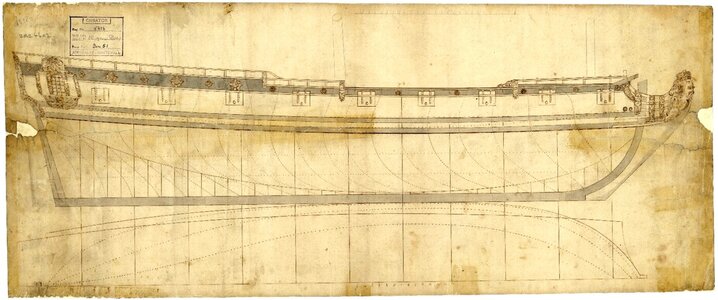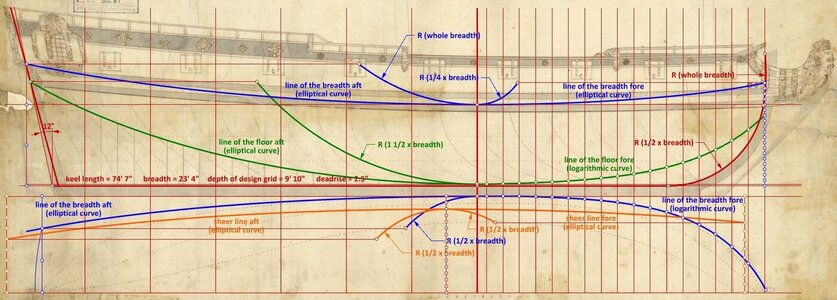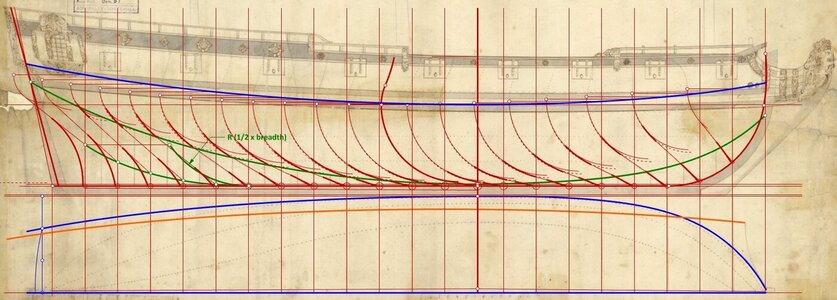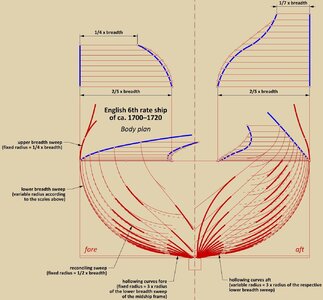.
Among the generally quite few early modern plans of ships of technical nature, there is another one, tentatively dated to the late 17th century. This draught, of unknown authorship, must be one of the very first depicting frame outlines in a fairly precise manner, and in this respect it may be considered a complete design. It depicts a rather modest vessel, which Brian Lavery identifies as an 18-gun ship of the 6th rate of c. 1670 (see B. Lavery, Deane's Doctrine of Naval Architecture, 1670). It is part of the RMG collection, with inventory number ZAZ4602 (J0052).
With some knowledge of the design techniques of the period already in hand, it is worth taking a closer look at this particular plan as well, in terms of the conceptual methods employed, which will perhaps allow it to be more accurately positioned chronologically, and perhaps additionally uncover some previously unknown design details.
After a preliminary assessment of this plan, it must also be acknowledged (especially after a recent experience with Keltridge's drawings of 1684), that this plan was certainly executed by a professional draughtsman and, for the possibilities of the manual drawing method, appears as the apotheosis of quantum precision.

.
Last edited:






